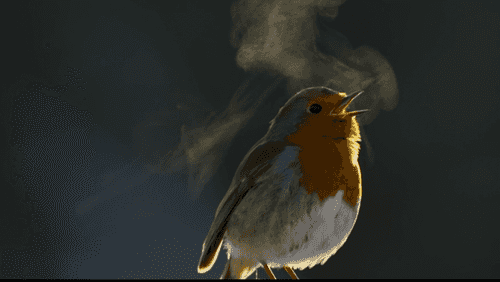
Following our preview and review of David Attenborough’s 2024 series Secret World of Sound, we’re skipping back a couple more years to draw Earth.fm users’ attention to Attenborough’s Wonder of Song.
First broadcast in 2022, this standalone programme is currently available in the UK on BBC iPlayer. In it, Attenborough chooses a selection of recordings of bird and animal songs, all of which broke new ground by challenging long-held assumptions about song in the natural world, and all of which were made since the then-96-year-old’s birth in 1926.
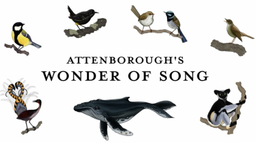
While there is no scientific definition of ‘song’, the description tends, as the broadcaster notes, to be applied to calls that we find beautiful or pleasing. “In truth, a somewhat whimsical label” – yet one that opens up a sonic pathway into a broader appreciation of the natural world.
Indris
Attenborough’s choices of recordings range across the animal kingdom, but it’s no surprise that the one closest to his heart is one that he made himself, back in 1960. As one of just three crewmembers on an expedition televised the following year as Zoo Quest to Madagascar (and also available on iPlayer), with no budget for a sound recordist, Attenborough had managed to source a battery-powered tape recorder – cutting edge at the time.
With this portable (albeit cumbersome) device, Attenborough was able to make the first ever recording of the call of the indri, the largest extant lemur species. At the time, indri had never even been photographed alive (let alone filmed) – yet by playing back his recording of the hidden creatures’ “eerie, whooping call[s]”, Attenborough enticed them into the open, where they came by leaping through the trees in huge bounds. (Watch this scene.)
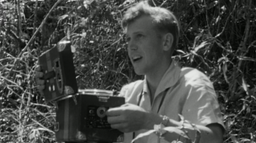
The indri is now critically endangered due to the destruction and fragmentation of its habitat resulting from slash-and-burn agriculture, logging, and the gathering of fuelwood.
Birdsong
Revolutionary technology such as spectrographs, which make sounds into readable images, and even that tape recorder – allowing recordings to be repeated and studied, an ability which has only existed since the 1870s – have made it possible to question and expand upon received wisdom about animal calls.
For example, in the 1970s, zoologist John Krebs set out to prove the function of great tits’ songs. After temporarily removing individuals from their territories, recordings of the species’ calls were played in some of these empty areas, recordings of something else entirely (a tin whistle) in others, and still others were left silent. New individuals only moved into the territories which were free from great tit song – including those in which the tin-whistle recording was being played – proving, for the first time (in 1975!), that song could function as a territorial deterrent.
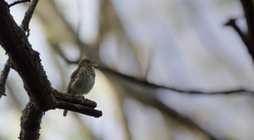
Of more than 10,000 bird species which have been described, around half are songbirds. Songbirds have the most complex vocal apparatus of all wildlife; their syrinx – a vocal organ equivalent to our mammalian larynx – can produce different sounds on both sides simultaneously. The intricacy of their songs may feature as many as 100 notes in just a few seconds. Due to their slower pace of life, birds are able to discern far more of this detail than we can, but, still: why so complex?
The answer (“of course”) is sex: females prefer “more intricate and detailed” songs. Charles Darwin’s theory of sexual selection suggested that males’ intense competition for mates led to the evolution of their singing in order to attract females. This implied that females appreciate beauty, having “an aesthetic sense” – but Darwin failed to ask why that might be the case.
More recent research has finessed his hypothesis. Attenborough shares recordings drawn from nightingales’ repertoires, which can number up to 250 individual songs. Females inspect different males’ territories, speed-dating style, and assess their singing. An experiment which found a correlation between males’ mating-season songs and their subsequent rate of feeding their young in the nest means that their song “is like a promise that the males give to the females to be good fathers”. Therefore: better singers make better parents.
However, contrary to Darwin’s theory, which assumed the opposite, not only male birds sing. Most studies of birdsong have historically been carried out in the Northern Hemisphere, where it is true that it is relatively rare for females to sing. But we are still learning about birdsong; now, female scientists, less inclined to sideline their counterparts in the species they study, have helped to establish that, in 64% of songbird species, the females do sing. In fact, it’s likely that, in the past, all female songbirds lived up to their name – but in cases of migration where males arrive at their destination first and establish territories, it is no longer necessary for the females to sing.
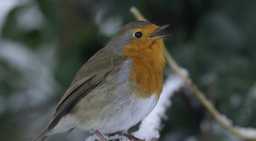
All songbirds’ ancestors originated in Australia. Here, the female superb lyrebird sings to maintain her territory (and the food it contains) while raising her chicks alone. She also imitates predatory goshawks in order to make herself seem more dangerous – so, song can be used to deceive. And her male counterpart is equally capable of dissembling. The males’ gift for mimicry sees them imitating the songs of at least 20 other species, plus sounds like camera shutters, car alarms, or chainsaws. Their highly complex mating song, analysed by scientists, can itself be subdivided into songs A, B, C, and D. Song D is an imitation of a flock of birds responding to a hidden predator, which the male superb lyrebird (the pun is almost too perfect) deploys in order to mate with a female while she is disoriented by the supposed presence of danger.
Other examples of birdsong which Attenborough shares include that of the Hawaiian Kauaʻi ʻōʻō. A recording of a male ʻōʻō singing at a point when there were possibly already no females left alive – “singing for a mate who no longer exists” – acts as a poignant, maddening reminder of all species’ precarity during the anthropocene. The Kauaʻi ʻōʻō, the last species of a family found nowhere else, was declared extinct in 2023, granting it the tragic claim to fame of being “the only complete extinction of an entire avian family [to occur] in modern times”.
Chillingly, this is far from likely to be the last such occurrence.
A recording of cellist Beatrice Harrison accompanying a nightingale (or is that the other way round?) – which she initially performed in 1924, making it the first live broadcast of any wild animal song – is a stark reminder that there are no longer any nightingales to be found in London. In the UK, 90% of this species has been lost over the past 50 years: “a tragedy”.
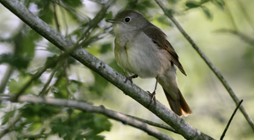
The Knepp Estate (a rewilding project which you can read more about on the Earth.fm blog) is trying to provide it with a habitat, with more than 40 territories being recorded – compared to just nine when intensive farming was still taking place on the site. Yet, in Britain alone, 38 million birds have been lost in the past 60 years, meaning that one in five are gone: a “catastrophic decline”.
“Without them,” as Attenborough remarks, “our lives would truly be impoverished.”
The wonder of song
Outside of our perception of their beauty, and even aside from their practical functions for the species themselves, songs from nature can have an even more existential importance.
It wasn’t until the 1950s, when hydrophones were being used around Bermuda to listen for enemy submarines, that the sounds of a whale were identified for the first time. Though we still don’t fully understand why whales sing, uncovering the humpback whale’s astonishing song, in particular – launching the Save the Whales campaign – helped to protect them from extinction as a result of overhunting.
“The conscience of the world was woken by the song of the whale […] just in time to save them” – let us hope that the appreciation of other species’ songs may also be a driver of their conservation.
Earth.fm is a completely free streaming service of 1000+ nature sounds from around the world, offering natural soundscapes and guided meditations for people who wish to listen to nature, relax, and become more connected. Launched in 2022, Earth.fm is a non-profit and a 1% for the Planet Environmental Partner.
Check out our recordings of nature ambience from sound recordists and artists spanning the globe, our thematic playlists of immersive soundscapes and our Wind Is the Original Radio podcast.
You can join the Earth.fm family by signing up for our newsletter of weekly inspiration for your precious ears, or become a member to enjoy the extra Earth.fm features and goodies and support us on our mission.
Subscription fees contribute to growing our library of authentic nature sounds, research into topics like noise pollution and the connection between nature and mental wellbeing, as well as funding grants that support emerging nature sound recordists from underprivileged communities.

